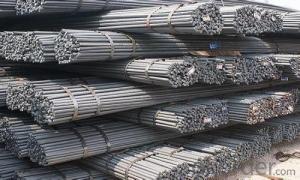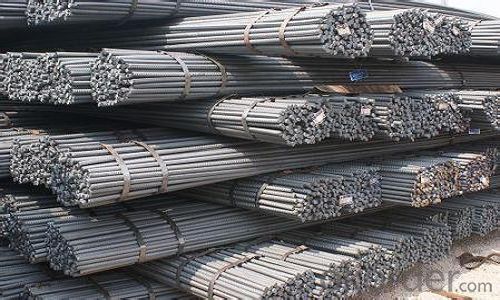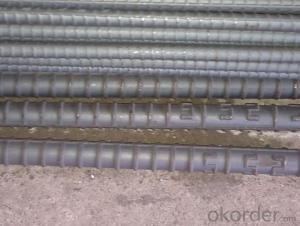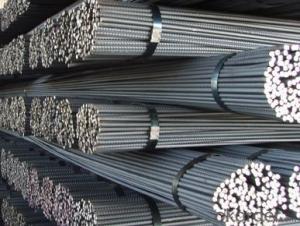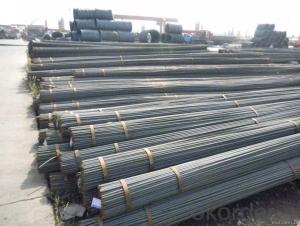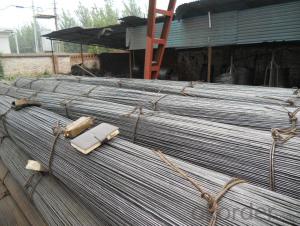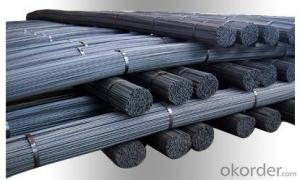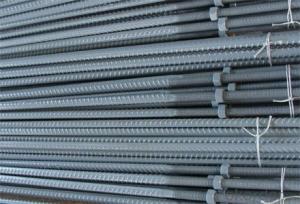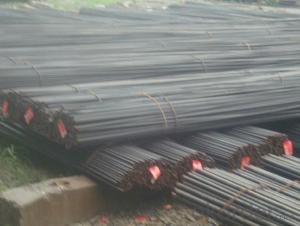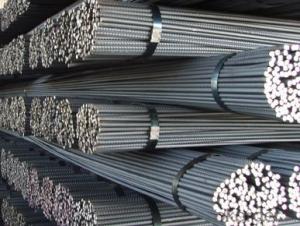GR60 deformed steel bars for construction
- Loading Port:
- Tianjin
- Payment Terms:
- TT or LC
- Min Order Qty:
- 25 m.t.
- Supply Capability:
- 100000 m.t./month
OKorder Service Pledge
OKorder Financial Service
You Might Also Like
Product Description:
OKorder is offering GR60 deformed steel bars for construction at great prices with worldwide shipping. Our supplier is a world-class manufacturer of steel, with our products utilized the world over. OKorder annually supplies products to European, North American and Asian markets. We provide quotations within 24 hours of receiving an inquiry and guarantee competitive prices.
Product Applications:
GR60 deformed steel bars for construction are ideal for structural applications and are widely used in the construction of buildings and bridges, and the manufacturing, petrochemical, and transportation industries.
Product Advantages:
OKorder's deformed steel bars are durable, strong, and resist corrosion.
Main Product Features:
· Premium quality
· Prompt delivery & seaworthy packing (30 days after receiving deposit)
· Corrosion resistance
· Can be recycled and reused
· Mill test certification
· Professional Service
· Competitive pricing
Product Specifications:
\Deformed bar is widely used in buildings, bridges, roads and other engineering construction. Big to highways, railways, bridges, culverts, tunnels, public facilities such as flood control, dam, small to housing construction, beam, column, wall and the foundation of the plate, deformed bar is an integral structure material. With the development of world economy and the vigorous development of infrastructure construction, real estate, the demand for deformed bar will be larger and larger..
Packaging & Delivery of HRB400 Deformed Steel Bar:
Packaging Detail: products are packed in bundle and then shipped by container or bulk vessel, deformed bar is usually naked strapping delivery, when storing, please pay attention to moisture proof. The performance of rust will produce adverse effect.
Each bundle weight: 2-3MT, or as required
Payment term: TT or L/C
Delivery Detail: within 45 days after received advanced payment or LC.
Label: to be specified by customer, generally, each bundle has 1-2 labels
Trade terms: FOB, CFR, CIF
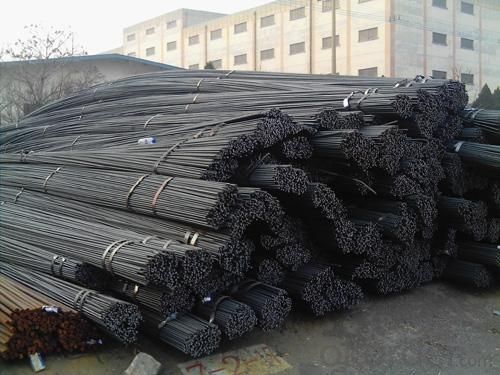
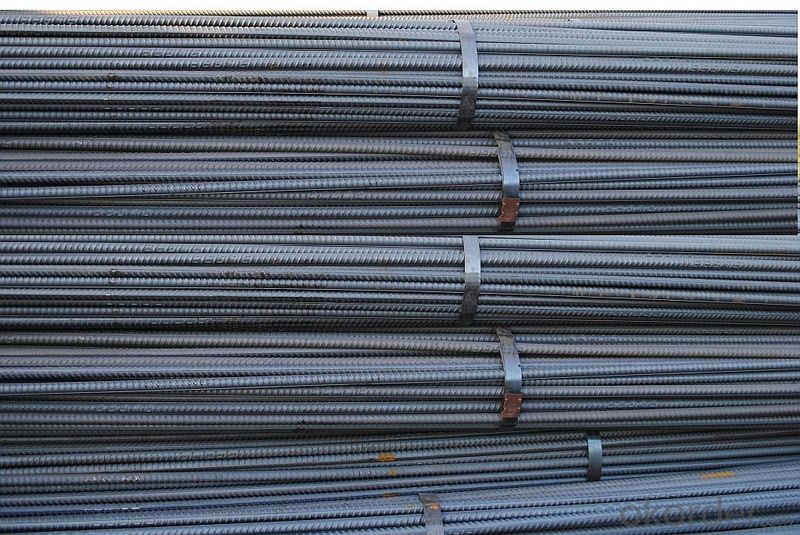
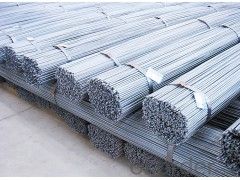
FAQ:
Q1: Why buy Materials & Equipment from OKorder.com?
A1: All products offered byOKorder.com are carefully selected from China's most reliable manufacturing enterprises. Through its ISO certifications, OKorder.com adheres to the highest standards and a commitment to supply chain safety and customer satisfaction.
Q2: Can stainless steel rust?
A2: Stainless does not "rust" as you think of regular steel rusting with a red oxide on the surface that flakes off. If you see red rust it is probably due to some iron particles that have contaminated the surface of the stainless steel and it is these iron particles that are rusting. Look at the source of the rusting and see if you can remove it from the surface.
- Q: Are steel rebars suitable for use in historical restoration projects?
- Depending on the specific requirements and circumstances, steel rebars may be appropriate for use in historical restoration projects. They possess high strength, durability, and the ability to effectively reinforce structures, making them a popular choice in modern construction and renovation endeavors. Nevertheless, it is crucial to consider the preservation and authenticity of the original structure when contemplating the utilization of steel rebars in historical restoration projects. Historical buildings often possess unique architectural features and materials that must be treated respectfully and preserved. In certain situations, the use of steel rebars may not be suitable, particularly if it compromises the historical integrity or visual appearance of the structure. This is particularly relevant for buildings with significant historical value or those protected by heritage regulations. If it is determined that steel rebars are necessary for structural reinforcement in a historical restoration project, it is vital to integrate them discreetly, minimizing their visual impact. This can be achieved by concealing them within the original materials or utilizing techniques that replicate the appearance of the original construction. In conclusion, while steel rebars offer structural advantages and durability, their use in historical restoration projects should be carefully evaluated to ensure they align with the preservation goals and requirements of the specific project. The preservation of historical authenticity should always be a priority in such endeavors.
- Q: What is the role of steel rebars in preventing structural vibrations?
- Steel rebars play a crucial role in preventing structural vibrations by providing reinforcement and stability to concrete structures. The rebars, which are embedded within the concrete, enhance the overall strength and rigidity of the structure, making it more resistant to vibrations caused by external factors such as wind, earthquakes, or heavy machinery. The presence of steel rebars helps to distribute and dissipate the energy generated during vibrations, reducing their amplitude and preventing potential structural damage or collapse.
- Q: Can steel rebars be used in railway bridge construction?
- Yes, steel rebars can be used in railway bridge construction. Steel rebars provide strength and durability to the bridge structure, making them suitable for supporting heavy loads and withstanding the dynamic forces exerted by trains. They are commonly used in the construction of railway bridges to reinforce and strengthen the concrete components of the bridge, enhancing its overall structural integrity.
- Q: What are the safety precautions to be followed while working with steel rebars?
- When working with steel rebars, it is crucial to follow certain safety precautions to prevent accidents and injuries. Here are some precautions to consider: 1. Personal Protective Equipment (PPE): Always wear appropriate PPE, including safety glasses, gloves, hard hats, and steel-toed boots. These items will protect you from potential hazards such as falling objects, sharp edges, and flying debris. 2. Training and Knowledge: Before working with steel rebars, ensure that you have received proper training and understand the safety protocols associated with this task. Familiarize yourself with the equipment being used and understand the potential risks involved. 3. Proper Lifting Techniques: Steel rebars can be heavy and awkward to handle. Always use proper lifting techniques, such as bending your knees and using your legs to lift rather than your back. Never attempt to lift a rebar that is too heavy for you; ask for assistance if needed. 4. Secure Storage: Store steel rebars in a designated area that is clear of any potential obstructions. Stack them in a stable manner to prevent them from toppling over and causing injuries. 5. Safe Handling: When moving steel rebars, be cautious of their sharp edges and potential for injury. Use appropriate lifting equipment, such as cranes or forklifts, if necessary. Avoid dragging or sliding rebars, as this can cause strains or sprains. 6. Fall Protection: If working at heights or near open edges, ensure that proper fall protection measures are in place. This may include using guardrails, safety harnesses, or safety nets to prevent falls. 7. Fire Safety: Steel rebars can become extremely hot when exposed to heat or flame. Ensure that there are proper fire prevention measures in place, such as fire extinguishers, and be cautious when working near flammable materials. 8. Communication: Maintain clear communication with co-workers and supervisors to ensure everyone is aware of their surroundings and potential hazards. Use hand signals or radios when working in noisy environments. 9. Regular Inspections: Regularly inspect steel rebars for any defects, such as cracks or sharp edges, that could pose a safety risk. Remove any damaged or faulty rebars from use immediately. 10. First Aid and Emergency Procedures: Be familiar with first aid procedures and emergency protocols in case of accidents or injuries. Have a well-stocked first aid kit readily available on-site and know the location of the nearest medical facility. By following these safety precautions, you can minimize the risk of accidents and injuries while working with steel rebars. Always prioritize your safety and the safety of those around you.
- Q: How are steel rebars used in industrial buildings?
- Steel rebars are used in industrial buildings to reinforce concrete structures and increase their strength and durability. They are commonly used in beams, columns, and slabs to resist tensile and compressive forces, ensuring the overall stability of the building.
- Q: Are there any disadvantages or limitations of using steel rebars?
- Yes, there are some disadvantages or limitations of using steel rebars. Firstly, steel rebars are prone to corrosion when exposed to moisture or harsh environmental conditions, which can weaken the structure over time. Secondly, steel rebars are heavy and require heavy machinery for transportation and installation, making them less suitable for certain construction projects. Additionally, steel rebars can cause electromagnetic interference, which can interfere with electronic devices or communication systems in some cases. Lastly, steel rebars have a high thermal conductivity, which can result in energy losses or thermal bridges if not properly insulated.
- Q: What is the average weight of a steel rebar?
- The average weight of a steel rebar can vary depending on its size and length. Steel rebars are typically sold in lengths of 20 feet and come in various diameters ranging from 3/8 inch to 1 1/4 inch. To calculate the average weight, we need to consider the density of steel, which is approximately 0.2836 pounds per cubic inch. The weight of a steel rebar can be determined by multiplying its volume (pi times the square of the diameter divided by 4, multiplied by the length) by the density of steel. For example, let's take a 1/2 inch diameter rebar with a length of 20 feet. The calculation would be as follows: 1. Convert the diameter to inches: 1/2 inch = 0.5 inches 2. Calculate the volume: (pi * 0.5^2) / 4 = 0.19635 cubic inches 3. Convert the length to inches: 20 feet = 240 inches 4. Multiply the volume by the length: 0.19635 cubic inches * 240 inches = 47.04 cubic inches 5. Multiply the volume by the density of steel: 47.04 cubic inches * 0.2836 pounds per cubic inch = 13.34 pounds Therefore, the average weight of a 1/2 inch diameter steel rebar with a length of 20 feet is approximately 13.34 pounds.
- Q: Can steel rebars be used in structures with high noise reduction requirements?
- Steel rebars can be used in structures with high noise reduction requirements, but they may not be the most effective solution on their own. Steel rebars, being a common construction material, do have some sound-dampening properties. However, their primary purpose is to provide reinforcement and strength to the structure rather than to reduce noise transmission. To achieve high noise reduction in structures, additional measures need to be taken such as using acoustic insulation materials or implementing specific design techniques. These may include the use of double walls, sound-absorbing panels, resilient mounts, and other specialized acoustic treatments. While steel rebars alone may not provide significant noise reduction, they can still contribute to overall noise reduction efforts when used in conjunction with other soundproofing techniques. It is advisable to consult with acoustic experts or engineers to determine the most suitable combination of materials and design strategies to meet the specific noise reduction requirements of a structure.
- Q: What is the difference between mild steel rebars and high-strength steel rebars?
- Mild steel rebars and high-strength steel rebars are two different types of reinforcement bars used in construction. The key difference between these two lies in their composition and mechanical properties. Mild steel rebars, also known as low carbon steel rebars, are made from steel with a relatively low carbon content. Typically, they have a carbon content of about 0.15% to 0.30%. These rebars are commonly used in general construction projects where the concrete structure does not require high tensile strength. Mild steel rebars have a relatively lower yield strength and ultimate tensile strength compared to high-strength steel rebars. On the other hand, high-strength steel rebars, also known as high tensile strength rebars or HSD bars, are made from steel with a higher carbon content, typically ranging from 0.40% to 0.60%. These rebars are specially designed to provide superior strength, durability, and load-bearing capacity. High-strength steel rebars have a significantly higher yield strength and ultimate tensile strength compared to mild steel rebars. This makes them suitable for use in critical structures that require a high load-bearing capacity, such as bridges, high-rise buildings, and industrial structures. Another important difference between mild steel rebars and high-strength steel rebars is their ductility. Mild steel rebars have better ductility, meaning they can undergo more deformation before failing. This property allows mild steel rebars to absorb more energy during an earthquake or other dynamic loads, making them suitable for seismic zones. High-strength steel rebars, on the other hand, have lower ductility but higher stiffness and strength, making them more resistant to extreme loads and providing better structural integrity. It is important to note that while high-strength steel rebars offer superior strength and load-bearing capacity, they are also more expensive compared to mild steel rebars. Therefore, the choice between these two types of rebars depends on the specific requirements of the construction project, including the structural design, load conditions, and budget constraints.
- Q: How do steel rebars affect the overall constructability of concrete structures?
- Steel rebars have a significant impact on the overall constructability of concrete structures. Rebars, also known as reinforcing bars, are embedded within the concrete to provide strength and enhance its structural integrity. These steel bars play a crucial role in resisting tensile forces that concrete alone cannot withstand. One of the primary ways rebars affect constructability is by increasing the load-bearing capacity of concrete structures. By reinforcing the concrete, rebars help distribute the applied loads more evenly, reducing the risk of structural failure or collapse. This allows for the construction of taller, larger, and more complex concrete structures that can safely accommodate heavier loads. Moreover, rebars also improve the durability and longevity of concrete structures. Concrete is strong in compression but weak in tension, making it susceptible to cracking and failure under tensile stress. The presence of steel rebars helps to counter this weakness by absorbing and distributing the tensile forces, preventing or minimizing cracks and enhancing the overall durability of the structure. In terms of constructability, the use of rebars simplifies the construction process by allowing for efficient and precise placement of concrete. Rebar cages are typically assembled prior to pouring the concrete, acting as frameworks that provide support and reinforcement. This enables faster and more accurate construction, reducing the risk of errors and rework. Furthermore, rebars also enhance the constructability of concrete structures by enabling flexibility in design. The ability to strategically position and shape rebars allows engineers to create complex structural elements, such as beams, columns, and slabs, with specific load-bearing capabilities. This versatility in design promotes architectural creativity while ensuring the structural integrity of the construction. However, it is important to note that the improper placement or inadequate amount of rebars can have detrimental effects on the constructability and overall performance of concrete structures. Insufficient reinforcement can lead to structural weaknesses, increased vulnerability to seismic activity, and reduced resistance to environmental factors like corrosion. Therefore, proper design and installation of rebars, in accordance with structural engineering standards and codes, are crucial to ensure the optimal constructability and long-term functionality of concrete structures.
Send your message to us
GR60 deformed steel bars for construction
- Loading Port:
- Tianjin
- Payment Terms:
- TT or LC
- Min Order Qty:
- 25 m.t.
- Supply Capability:
- 100000 m.t./month
OKorder Service Pledge
OKorder Financial Service
Similar products
Hot products
Hot Searches
Related keywords
